There are three main blood vessels in the heart. Can one or two be blocked to keep the heart functioning properly?
Hello, everyone! I'm Dr. Xiao Wang! Associate Chief Physician of the All-Army Cardiac Intervention Center!
This question really hits the nail on the head. As a professional cardiovascular physician sharing this topic with you.
The heart has three large vessels, a right coronary on the right side and two anterior descending and retrograde branches on the left side.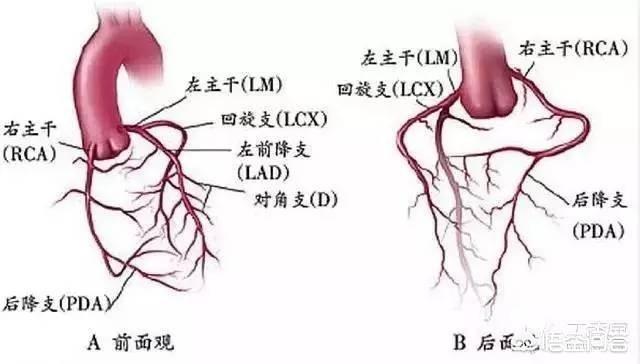
Clogging one up to the point where the heart can't function properly.It's closely related to where the traffic is and how long it is.。
Let's assume for a moment that the blockages are at the same time and only the sites of blockage are different, so that the three vessels are relativelyThe anterior descending branch is the largest, with the highest risk and mortality;The right coronary and retrograde branches are relatively low risk. That is, blockage of the anterior descending branch has a high likelihood of the heart not functioning properly, while blockage of the other two will function relatively normally.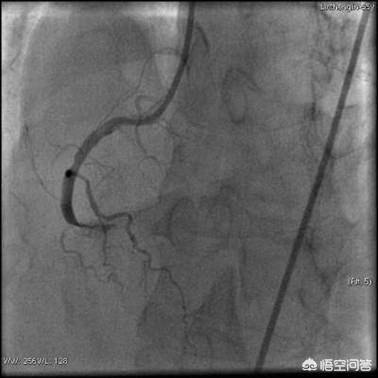
(Right crown blockage)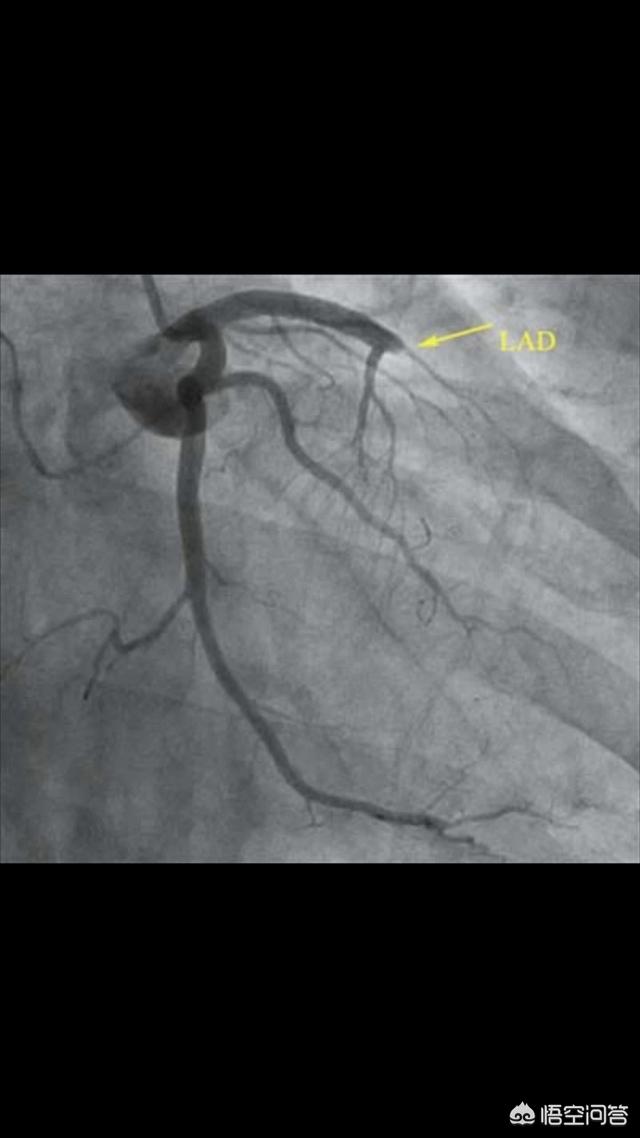
(Front descending branch blocked)
But there is another problem here, blocked in the root of the blood vessel or the end, blocked in the root are life-threatening, blocked in the end, even in the anterior descending branch will not affect the normal operation. There is also the specificity, everyone's blood vessel size is different, not everyone anterior descending branch are the largest, blood supply are the most.
Second question, time.For example, if a blood vessel is blocked, opening it in thirty minutes has a completely different effect than opening it in ten hours. Let's assume that the same blood vessel is blocked, both anterior descending branches. If a person opens it in thirty minutes, it will not only save his life, but also save him from heart failure in the future, just like a normal person. If the blood vessel is opened in ten hours (assuming that the person can still live for ten hours), then even if the person is saved, the possibility of heart failure is almost 100%.
So, although the heart has three blood vessels, blocking one and two others, each of them is very, very important and irreplaceable. The heart is as big as its own fist, to never stop working to meet the needs of the whole body, once the blood vessels are blocked, there is bound to be myocardial necrosis, even if it can survive, it will certainly affect the normal function to a greater or lesser extent.
Even if one is clogged and two can function, they are not functioning properly because the life span has been compromised and must be affecting heart function.
Therefore, Dr. Xiao Wang has been committed to popularizing the knowledge of coronary heart disease, please focus on the prevention of coronary heart disease. Angina early consultation, chest pain persists without relief, the first time to call 120!
@DrSmallWangSpeaksHealth To popularize coronary heart disease to the end!
The blood vessels of the heart are called coronary arteries. A blocked blood vessel in the heart is coronary artery disease. This question actually asks how to determine the severity of coronary heart disease. The heart does have three blood vessels and one or two of them are blocked, so is this coronary heart disease a very serious coronary heart disease?
In fact, blocking several blood vessels is only one aspect in determining the severity of coronary heart disease.
The most important question is whether the blockage of blood vessels is a quick blockage or a gradual blockage, that is to say, whether it is an acute myocardial infarction or a chronic angina pectoris. The conditions are very different in these two cases.
If it is blocked very quickly, even if one blood vessel is blocked and everything else is fine, we clinically call it an acute myocardial infarction, which is very dangerous, more so than a chronic blockage of several blood vessels.
Because of the rapidly clogging blood vessels, necrosis occurs in parts of the heart. If the necrotic part of the heart happens to have the conduction tissue of the heart passing through it, the necrotic tissue may cause affect the conduction of the heart and be life threatening.
Because the heart relies on electricity to direct its work, if the electricity is broken, the heart will not beat. There is a situation that the wire is not broken, but the wire of the rubber is broken, leakage, a leakage of the heart will beat chaotically. Heartbeat disorder, and the rhythm is particularly fast, this time the heart is also equal to no work, at this time the most important measure is defibrillation, that is, what we call electric shock.
That's why acute blockage leading to myocardial infarction is so dangerous, even if the number of branches of the blocked vessel is small, just one.
To put it another way, if the blockage is chronic, that is to say, it is gradual. This condition, which we call chronic coronary artery disease, is a slow blockage of a blood vessel, at which point the heart grows small collateral blood vessels that go around the blockage next to it.
I've seen patients with all three blood vessels completely blocked. But the heart grows a lot of collateral circulation, I'll help you, you help me, like a couple of poor buddies, taking care of each other. Of course, the place where the side branches grow is actually the front end of the blockage. People have some symptoms, but they're doing pretty well.
When we talk about prevention, what we are actually preventing is an event. What do we mean by an event? It is the acute blockage of blood vessels. After the plaque on the coronary artery ruptures, a blood clot suddenly grows and blocks the blood vessel at once, leading to myocardial infarction, on which life-threatening arrhythmia and heart failure and other serious complications occur.
So the extent of the blockage is one thing, but actually the most important thing is the speed of the blockage, of course. If it is acute compared to acute and chronic compared to chronic, then certainly the greater the extent of the lesion, the more branches of the lesion, the more dangerous the situation is. A chronic one or two branches of blockage will be able to keep functioning, but of course function will be affected to some extent. Acute ones, even if there is only one branch, are dangerous, even at the risk of death.
That's a good question, the heart does have three blood vessels, can one or two of them be blocked and still keep the heart functioning properly?
First, what do the three blood vessels of the heart do?
The blood vessels of the heart, the blood vessels that supply blood to the heart muscle, or the blood vessels of the heart that nourish the heart muscle have a total of three, they are the anterior descending branch, the echogenic branch, the right coronary artery three blood vessels. The three blood vessels have the same role, they all nourish the myocardium and supply blood and oxygen to the myocardium, so that the three blood vessels can be called the nutritional source of the heart's myocardium. It is only the distribution of their different parts, and the scope of the supply of the myocardium is different.

Second, what are the consequences of a blockage of the three blood vessels?
A blockage in a coronary artery, if it is an acute occlusion, is what we often call a myocardial infarction. If it is a chronic occlusion, it may be what we call angina pectoris. But no matter which kind of occlusion, the occlusion of coronary blood vessels will cause myocardial ischemia in the area it supplies, thus causing various symptoms, such as chest tightness and chest pain after activity, such as ischemic cardiomyopathy, and so on. So, no matter which vessel is occluded, it will cause myocardial ischemia or necrosis, and the necrotic myocardium is not reversible or regenerable. So, the importance of the three blood vessels may be understood by everyone.
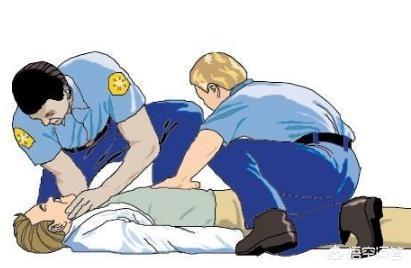
Third, will the heart still function normally after a blood vessel blockage?
Understanding the second question of what are the consequences of blood vessel blockage, let's answer this question again - will the heart still function normally after blood vessel blockage? If it is an acute occlusion of blood vessels, which is what we call acute myocardial infarction, then the patient's heart will be rapidly necrotic, and if it is not handled in time or handled properly, the patient's life is in danger at any time. In the case of chronic occlusion, if the patient has symptoms, most of them are angina pectoris, and if there are no symptoms, most of them are asymptomatic coronary artery disease. These patients may not affect their normal life, but they will still have the risk associated with acute cardiac events. After all, the importance of the coronary arteries is here, and the loss of that one blood vessel is a major blow to the heart. However, we will still find that patients with one or two blocked blood vessels are still alive or even asymptomatic, but the life expectancy and quality of life of such patients may be greatly reduced.

So, blocked blood vessels are definitely not good, but it's not that they are definitely life-threatening when they are blocked. But the reality is that our heart, whether it is acutely blocked or chronically blocked, takes a great beating.
The heart has three main arteries to supply itself with blood, all of which are called coronary arteries. These are the right coronary artery and the left coronary artery. Of these, the left coronary artery can be divided into the left anterior descending branch and the circumflex branch.
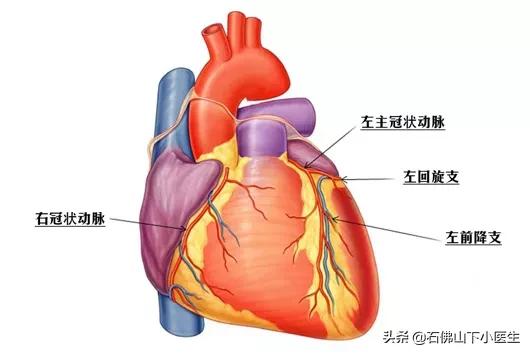
Can the heart sustain itself if the 3 main blood vessels of the heart are blocked?
It depends on whether the blockage is an acute blockage or a slow blockage. There is a big difference between an acute blockage, which is also known as an acute myocardial infarction.
I. Acute blockage of blood vessels
1. Mechanisms of acute myocardial infarction
- An acute blockage of a coronary artery, also known as an acute myocardial infarction, is a very dangerous disease that can cause death regardless of which blood vessel is blocked, and the heart is naturally unable to function properly.
- Most acute myocardial infarctions are caused by the rupture of plaque inside the artery, which leads to platelet aggregation and thrombosis, resulting in a complete occlusion of the blood vessel. Before the plaque ruptures, the blood vessel is not completely blocked.
- As a result, the area supplied by this blood vessel becomes ischemic and is unable to receive a blood supply. If the blood vessel is not opened in time, this part of the heart muscle cells will die.
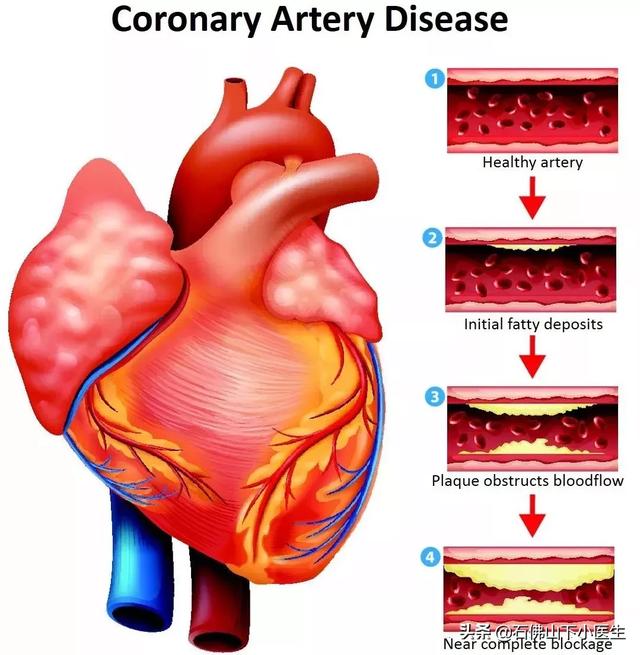
2、What are the causes of death from acute myocardial infarction?
- Acute myocardial infarction (AMI) is a serious disease, especially during the cold winter months. The mortality rate of myocardial infarction is increasing, especially before hospitalization.
- The causes of death in patients with myocardial infarction are shock of cardiac origin, malignant arrhythmias (e.g., ventricular fibrillation, cardiac arrest, etc.), and mechanical complications (e.g., cardiac rupture).
- A heart attack must be promptly admitted to the hospital.
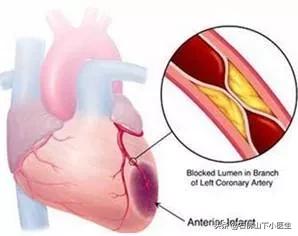
II. Chronic blockage of blood vessels
- Chronic occlusion of blood vessels is much better than acute occlusion, and some patients with one or two of the three blood vessels blocked can still live a normal life, but of course heart function is still affected.
- The main reason is that this blood vessel is slowly occluded, and in the process of occlusion, a lot of collateral circulation will grow. For example, a patient's right coronary occlusion, in the process of occlusion, the right coronary supply of cardiomyocytes there will be ischemic process, in this process, other parts of the blood vessels will grow small blood vessels to supply this part of the cardiomyocytes. It's like taking a small road when the big road doesn't work.
- Of course compared to the big roads, the small roads are definitely worse. As a result, there may still be ischemia in the heart, and over time, the heart may become fibrotic, leading to failure of the heart.
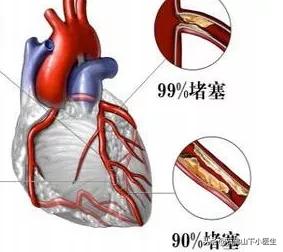
Summary:
- Whether a blockage of a large blood vessel in the heart will affect the normal functioning of the heart depends mainly on whether it is a chronic occlusion or an acute one.
- Acute occlusions are serious, chronic occlusions are better, but there is no comparison to someone with a normal heart.
- All in all, it is best to prevent the risk factors and keep the blood vessels from blocking. If the blood vessels are already bad, take good medication to prevent plaque from rupturing and causing an acute blockage.
I am adhere to the medical science and popularization of Chen Dafu, my answer to my satisfaction, please give me praise and attention, your support, is my creation of the greatest power.
The heart is the human body's "engine", this engine day and night to pump blood is also needed "refueling", but it refueling way is to rely on the arteries of the heart for the myocardial blood supply, cardiomyocytes is the heart pumping blood of the real The heart muscle cells are the real "labor force" of the heart pumping blood. Coronary arteries, can be said to be the lifeblood of the heart muscle cells, directly related to these pumping function of the "labor force" can eat, have the strength to work. So, if the main artery responsible for transporting dry food to the heart muscle cells blocked, what will happen?
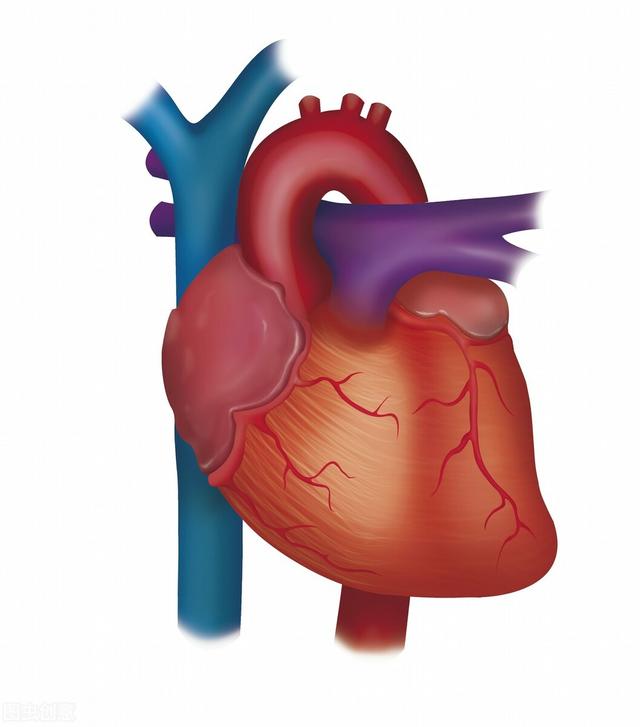
The heart has three main blood vessels
Although the function of the heart is to pump blood to the whole body, but in order to meet its own power needs, but also need blood to nourish their own heart muscle cells, therefore, in the heart of the left ventricle exit place grows blood vessels, there are mainly three, respectively, the anterior descending branch, cyclopean branch, the right coronary artery, these arterial vessels in the heart of the fresh blood lead out to the roots of the tree like and step by step downward forked out of a lot of branching and forked out of the branches and forked out. It pervades all parts of the heart and provides nutrients to the heart muscle cells.
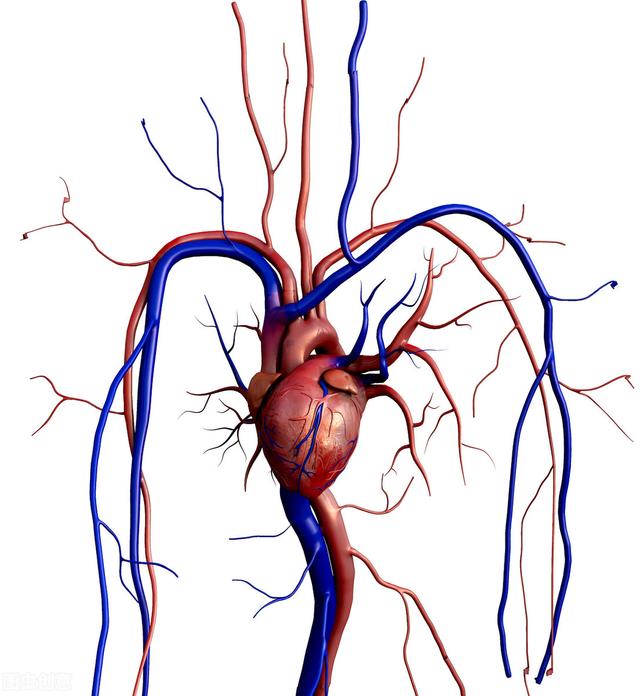
The heart has three main blood vessels. What happens when one or two are blocked?
What happens when one or two of the main blood vessels that provide nutrients to the heart muscle cells are blocked? Many people assume that they definitely won't survive, but what Pharmacist Wang has to tell you is: not necessarily! There are several main aspects related to what the consequences of a blockage are.
First, which one is blocked. These three major blood vessels, if the anterior descending branch is blocked, the patient will be at a relatively high level of risk.
Second, the blockage is in that location. Although there are three main blood vessels in the heart, the blood vessels are not single, and there are many branches downward. If the blockage is at the end of the branch, the threat to the heart is not very great; however, if the blockage is at the root, the risk will be significantly increased.
Thirdly, the speed of blockage refers to whether it is a gradual blockage or a complete blockage at once. If the blockage is gradual, in the course of the blockage, the heart will start the blood vessels at the end of the blockage to make automatic connections gradually, bypassing the blocked blood vessels to form a pathway to ensure the normal transportation of blood. If the blockage is complete at once, the threat to the patient's health and even life is greater.
Fourth, how long does the blockage take to unclog. If the blood vessel blockage, in a short period of time, because of ischemia or hypoxia caused by myocardial damage to a small area, the basic physiological activities in this case will not be affected by too much, if the process is longer, myocardial damage to a larger area of cardiac function is seriously impaired, the patient's life may be jeopardized.
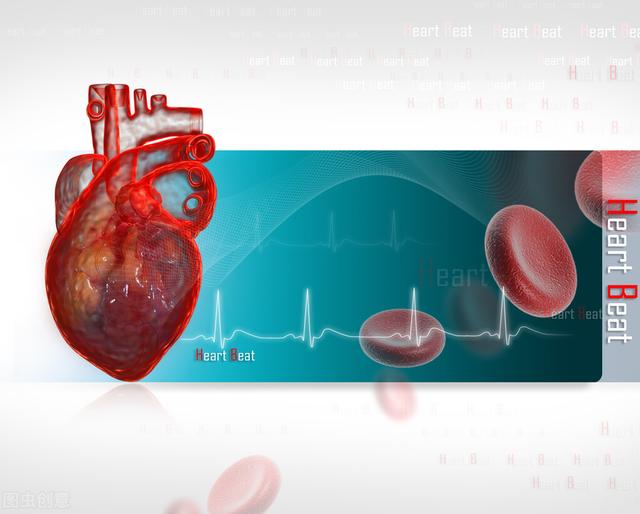
I am Pharmacist Wang, dedicated to helping you manage your body by explaining complex and difficult disease knowledge in plain words. Your praise is my greatest motivation! In addition, if your family members also have related troubles, please forward this article to them!
This is an interesting question, the three major blood vessels of the heart, blocked one, the other blood vessels are still supplying blood normally, is it not affecting the function of the heart heart heart is still functioning normally?
The answer is definitely not that.
Why does an obstruction in one of the blood vessels of the heart affect the function of the heart?
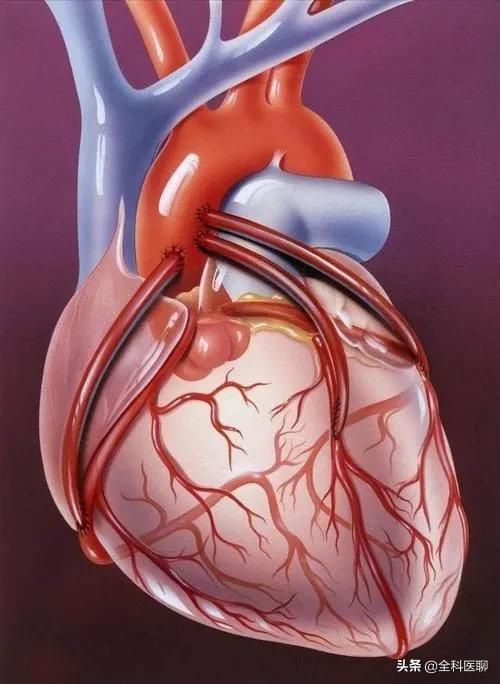
Everyday coronary artery blockage in the heart, needless to say, these three major blood vessels are blocked, is blocked branch small blood vessels, there will be obvious symptoms of discomfort, a serious risk to health.
First of all, the coronary blood supply to the heart is not several blood vessels all working together to supply one place, but different blood vessels supply different areas of the heart。
As an example, let's say that the heart is a house as a whole, that the house has several rooms together, and that each room is supplied with water from a water pipe, and that each room must never run out of water. If a water pipe is blocked and the water pipes in the other rooms do not supply water but to that room, then the house will be short of water.
Also, it has to start with the fact that our heart is an organic whole. No matter where in the heart there is a decline in function, it will involve the heart as a whole not working well.
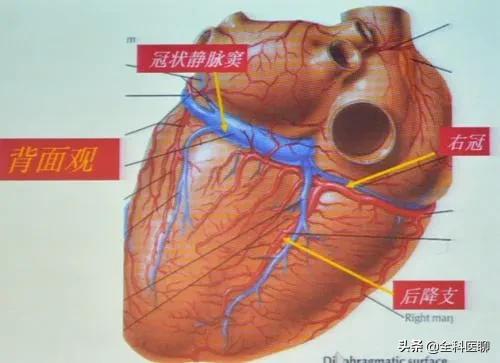
We all know that the heart is one of the most important organs of our body, and when describing the heart, it is said that the heart is the engine of the body, driving the body as a machine to run, and if the engine works less efficiently or doesn't work any more, then the body will experience serious health problems or death.
Let's open up and look at these blood vessels of the heart and how they supply the heart.
The beating heart provides the blood supply to all the organs of the body, bringing in the oxygen and energy that the body needs. The heart also needs a blood supply to participate in its work.The blood vessels that supply the heart we call coronary arteries. It is only after the heart muscle is nourished through the coronary arteries that the heart muscle can work to produce contraction, diastole, and pump its blood to all tissues and vital organs throughout the body.
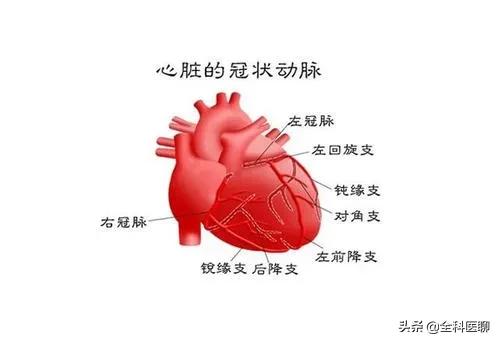
The coronary arteries mainly include the left anterior descending branch, the rotary branch, the right coronary artery of the three vessels, generally speaking, the left anterior descending branch mainly supply the anterior wall of the left ventricle and the septum between the left and right ventricles, the left rotary branch supply the lateral and posterior walls of the left ventricle, a small portion of the rotary branch also give the sinus node for the blood supply; the right coronary artery mainly to the right ventricle and the right atrium for the blood supply, most of the cases the right coronary artery at the same time to give the sinus node and the AV node for blood supply. The right coronary artery supplies blood to the right ventricle and right atrium, and in most cases to both the sinoatrial node and the AV node.
So, different blood vessels supply different areas of the heart, and as mentioned above, our blood vessels are an organic whole, there is no priority between the various locations, they are all important, and no matter what goes wrong in that area, it's a big problem.
This means that none of the blood vessels that supply blood to the heart, can be blocked. And when there is a blockage of the blood vessels of the heart, which is often referred to as a myocardial infarction arrives, there are noticeable symptoms of discomfort.
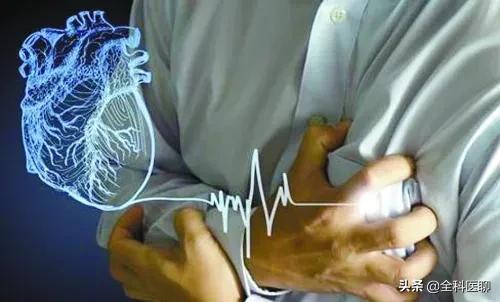
For example, acute chest painThe Typical presentation is pressure-like pain in the precordial region. Sometimes it also manifests as abdominal pain, back pain, shoulder pain, jaw pain, etc. This pain is chronic and is not relieved by taking nitroglycerin.
Further, the pain of myocardial infarction, etc. brings a sense of near death, profuse sweating, and other discomforts.
In addition, due to the decline in heart function, you may also experience discomfort such as panic attacks and chest tightness, and difficulty in breathing.And in more severe cases, even malignant arrhythmias can occur, causing fainting and coma, and so on.
That is why the presence of a blockage in the coronary vessels of the heart, even a small one, can have serious consequences. When you suspect an attack of myocardial infarction, you should actively seek medical attention.
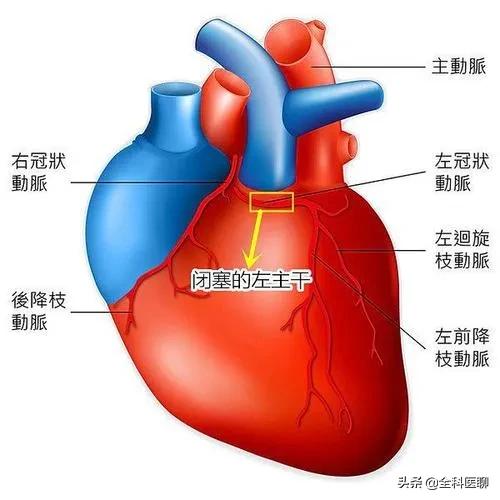
At present, many hospitals have set up chest pain emergency centers and opened green channels for chest pain diseases, because the condition of heart blood vessel blockage is dangerous and critical. And early revascularization is currently one of the most important ways to treat myocardial infarction.
In summary, the heart, despite having several blood vessels supplying blood at the same time, can have significant health consequences for the body regardless of which blood vessel is blocked.
I'm @GeneralPracticeMedChat, it's not easy to code, I hope it's helpful and thank you for your supportive attention!
Thanks for the invite!
Follow Dr. Lee and you talk about health, bring you more and more practical health knowledge!
Our human body is the most subtle and precise machine in the world; every tissue and organ has its use, and none is superfluous.
The heart does have three main blood-supplying arteries, and although there is some traffic between them, they each have their own range of blood supply, and no one can replace anyone.
The two main coronary arteries that provide the heart's own blood supply emanate from the aorta and are divided into the left and right coronary arteries. The left coronary artery (LCA) is quickly subdivided into a left anterior descending branch and a left circumflex branch, which supply blood to the left ventricle and the left atrium; the left anterior descending branch supplies the left anterior portion of the heart, and the left circumflex branch supplies the lateral and left posterior portions of the heart. The right coronary artery (RCA) travels a long distance and then divides into two smaller branches: the right posterior descending artery and the large marginal branch, which supplies blood to the right ventricle, right atrium, and sinus node (a cluster of cells in the wall of the right atrium that regulates the heart's rhythm). The right coronary artery, along with the left anterior descending artery, helps supply blood to the middle or septum of the heart.
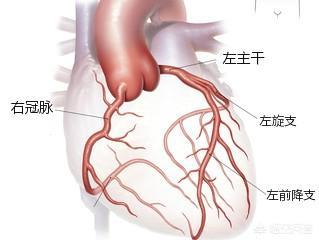
Since the coronary arteries deliver blood to the heart muscle, any coronary artery disease may affect the heart's function by reducing the heart's own supply of oxygen and nutrients. A blockage in one of the coronary arteries (a branch) can cause ischemia in the area supplied by that artery, and if the blockage is not removed in time, it can cause necrosis of the heart muscle cells in that area, which can affect the function of the heart. If the blockage is in the main artery, it can be life-threatening.
Therefore, although the heart has three main blood vessels, each one is important and blockage of any one of them may affect the function of the heart. None of the three blood vessels of the heart should be missing. For the sake of your own health, please take good care of our blood vessels and heart!

Before answering this question, let's look at a case: a 58-year-old middle-aged patient with persistent chest pain presented to the doctor with a history of hypertension and hyperlipidemia, long-term heavy smoking, considered acute heart attack, and was urgently put on the stage for coronary angiography, the three main blood vessels of the heart, the anterior descending branch was completely occluded, the echogenic branch was heavily stenosed, and the right coronary was completely occluded.
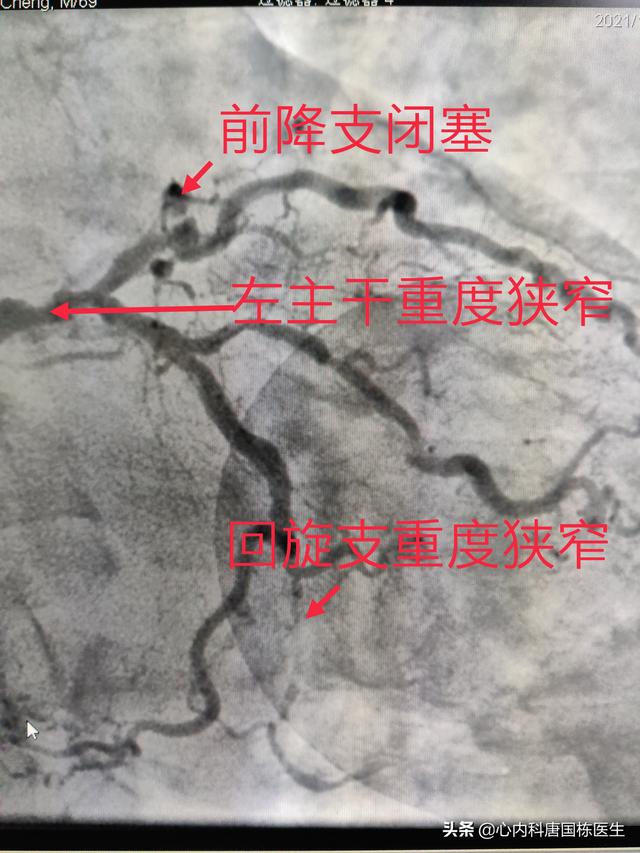
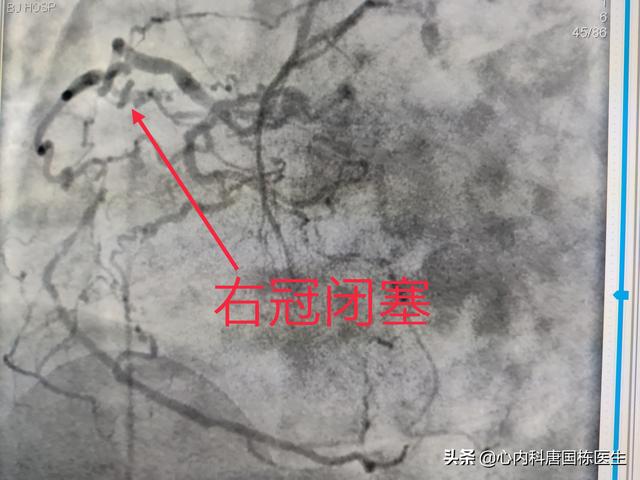
As a rule, the heart has only three blood vessels, any one of which is blocked will have serious consequences, like this patient blocked two and a half, how does the heart work? This question is still complex, or varies from person to person and from vessel condition to vessel condition, with the following influencing factors:
1. Acute or chronic blockage
Coronary heart disease development is a very slow process, the plaque in the blood vessels slowly increase, the lumen of the blood vessels gradually become narrower, and finally completely blocked, in this case the patient gradually adapted to the ischemia caused by the narrowing of the blood vessels, it is like a person's daily meal is 1 catty, from now on every day, let him eat only 9 two, the first few days may be hungry, and then slowly don't feel hungry, and then give him to reduce it to 8 two and a half, and then slowly adapted to it again. After half a year, 3 taels of rice a day can also sustain him. Acute occlusion is different, once appeared after the blood vessels have no blood flow at all, it is like suddenly reduce the ration from 1 catty to 3 two, the person will certainly be hungry, acute occlusion of blood vessels caused by acute myocardial infarction, the patient will have severe chest pain, cardiac function will be greatly affected, and even the emergence of heart failure, shock.
2. Whether there is a collateral circulation
Blood vessels in the process of slow blockage, the human body will have its own regulation, the left side of the blood vessels blocked, the right side of the blood vessels will grow a lot of small branches of their own, that is, what we call collateral circulation, to supply the left side of the blood vessels of the original range of blood supply, in this way, to a certain extent, can alleviate the myocardial ischemia. It's like although the person's staple food amount reduced, but will give him a little bit more fruit every day, although can not completely replace the reduced staple food, but at least not so hungry. But after all, there isn't much fruit, and over time the person will still be hungry.
3. The other two blood vessels
This article is easy to understand, if one blood vessel is blocked, the other two blood vessels are not a problem, the impact will be relatively small, as if lunch is not available, breakfast and dinner are normally supplied, the day can be carried off. On the other hand, if the other two blood vessels have problems, the impact will be much larger, lunch is gone, breakfast and dinner are reduced by half, will certainly be hungry.
4. The condition of the branching vessels
The blood vessels of the heart are like branches of a tree, not three lone branches, but from the main trunk to the branches to smaller branches to the leaves, so a blockage in the main trunk can be compensated for equally well if there are still relatively large branches. Like the patient mentioned above, in the first picture, there are two black blood vessels in the middle of the three red lines, which are branches of the anterior descending branch and the retrograde branch, both of which are relatively unobstructed, and a large part of this patient's cardiac blood supply originates from these two branches. That's why this patient's heart can still be maintained even though the main blood vessels are blocked two and a half times.
5. Location of blockage
If the blockage is at the proximal end of the blood vessel, like a problem upstream of a river, the area of myocardium affected will be wider and have a greater impact on cardiac function, and if the blockage is at the distal end of the blood vessel, the impact will be relatively smaller.
Having written so many words, I don't know if I have explained this question clearly, but in fact, the answer to this question is not important to the general public, and we don't want anyone to block any of the blood vessels.
Establishing a good lifestyle, controlling blood pressure, blood sugar and blood lipids, regular checkups, and timely consultation to detect problems when you are not feeling well are more important.
The heart is shaped like an inverted, slightly flattened cone at the front and back. The arterial system above the heart, also known as the coronary arteries, surrounds the heart like a hat on the head, so it is called the coronary arteries. It is said that the arterial system is like a hat on the head, and the name is indeed very graphic.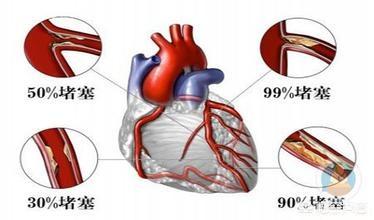
The coronary arteries are the arteries that supply nutrient-containing blood to the heart. They begin at the root of the aorta (ascending aorta), and are divided into left and right branches, which travel on the surface of the heart. The left side consists of the anterior descending branch and the circumflex branch, of which the anterior descending branch plays the most important role and can be visualized as the oldest. The systolic branch plays a relatively minor role and can be called the third. The right side of the artery is called the right coronary, its role is smaller than the anterior descending branch, but greater than the gyratory branch, can be imaginatively called the second.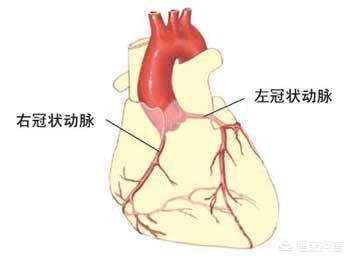
These three vessels are the three main blood vessels of the human heart, and a blockage in any of them can be called an acute myocardial infarction. Even a blockage in one blood vessel can lead to death and disability. For some serious cases where more than one blood vessel goes wrong, it is an even more critical situation that needs to be dealt with in a timely manner or else the risk is high.

The coronary arteries that supply the heart's blood supply are the coronary arteries, which are divided into two branches: the left coronary artery and the right coronary artery, and the left coronary artery is divided into two branches shortly after the main stem of the left coronary artery is issued: the left anterior descending branch and the circumflex branch. The left anterior descending branch mainly provides blood supply to the apical region of the heart, supplying blood to about 40% of the heart muscle cells; the circumflex branch mainly provides blood supply to the bottom of the heart, supplying blood to about 30% of the heart muscle cells; together with the right coronary artery, which provides blood supply to the right side of the heart, supplying blood to the remaining 30% of the heart muscle cells; these are the three main blood vessels that normally supply blood to the heart.
When the narrowing of one or two blood vessels causes blockage, the heart muscle cells in their corresponding blood supply area will be ischemic and necrotic, which will definitely affect the normal functioning of the heart. However, it also depends on the location and degree of blockage, if the left anterior descending branch lesion, the scope of the impact is relatively large, the problem is also more serious; by the same token, a blood vessel blockage of 90% is much more serious than a blockage of 70%. Also depends on whether the blockage is acute or chronic, if it is acute blockage, myocardial cell necrosis is more, the consequences are more serious; and if it is chronic blockage, the human body has a very strong adaptive ability, may have grown a lot of collateral blood vessels to supply the distal myocardium, just like a big road is not accessible can be from the alley through the same, so the same lesion caused by the consequences are not necessarily serious.
In any case, a blockage in one or two of the three main blood vessels of the heart, if the degree of blockage is 70% or more, will certainly have some impact on the functioning of the heart, and should be sought and treated promptly.
This question and answer are from the site users, does not represent the position of the site, such as infringement, please contact the administrator to delete.